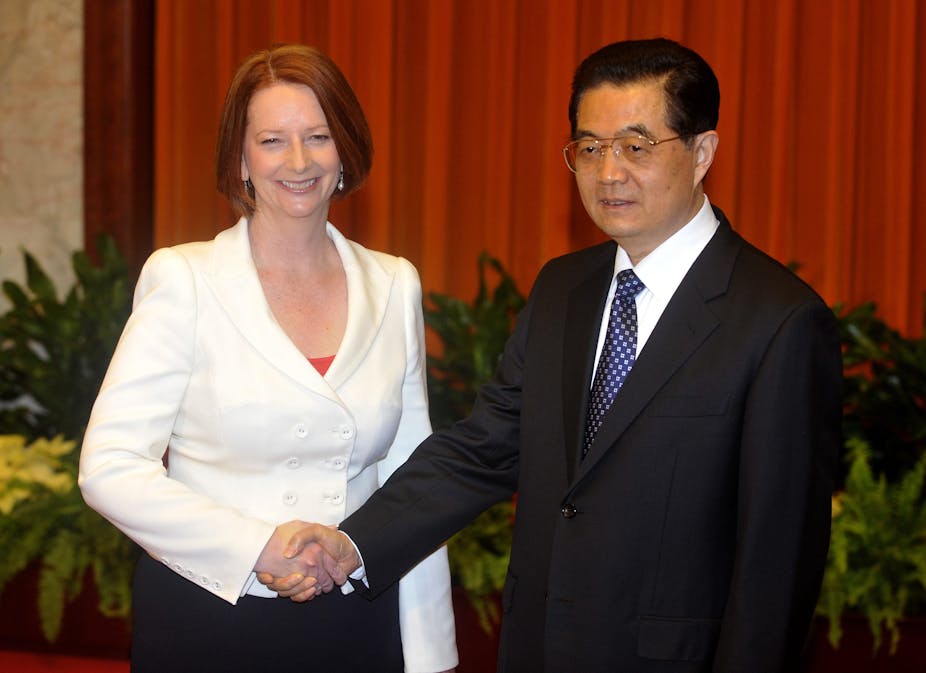AUSTRALIA IN ASIA: In the fifth part of our series, Kathe Kirby of the University of Melbourne examines whether our education system is preparing children for the future.
Prime Minister Julia Gillard has announced a White Paper to identify action required to prepare Australia to take advantage of what many call the Asian Century.
Many think they already know the answer: dramatically increase the number of young Australians who speak Asian languages and know Asian cultures.
Five year olds starting school today enter the workforce in 2030, just at the time when China and India resume their position as the world’s top economic powers. Asia knowledge, skills and understandings, or “Asia literacy”, equips young Australians to harness these opportunities, provides Australia with the skill-set to resolve global issues and ensures young people have the mind-set to strengthen social capital through understanding what it means to be Australian today.
Learning to be in Asia, not about Asia
Asia literacy requires education to produce a strong cohort of Australians fluent in an Asian language and all young people to be equipped with knowledge of Asia through History, English, Geography, Arts, Maths and Science throughout their schooling.
So how are we doing?
The good news is that for the first time national school education policy is in place to progress Asia literacy.
The Melbourne Declaration on Educational Goals for Young Australians states the need for all Australians to be Asia literate.
The new Australian Curriculum has a cross curricula priority of “Asia and Australia’s engagement with Asia” and a priority on Asian languages.
National investment of $62.4m is in place to June 2012 through the National Asian Languages and Studies of Asia in Schools Program (NALSSP).
Talking my language
A 2010 report on the current status of Chinese, Japanese, Indonesian and Korean languages in Australian schools shows the scale of the task. Only eighteen percent of Australian school students currently study an Asian language, decreasing to fewer than six percent by Year 12.
A scant 300 students, who do not have a Chinese background, are currently studying Chinese at Year 12. Indonesian is losing 10,000 students a year.
If this pattern continues there will be no students studying Indonesian at Year 12 by 2020. Japanese has declined twenty percent since 2005 and Korean is taught in very few schools.
The challenges of increasing student participation in Asian languages are well documented in the sixty-seven reports into languages education since the 1970’s!
Each Asian language has specific needs and a “one size fits all” approach is not adequate. Radical innovation in the way languages are taught is required – especially increasing time on task, new pedagogies and stronger pathways from primary through secondary school and onto tertiary education.
As well as “supply” issues, there is low “demand” for second language learning. Unlike most subjects, students get to choose whether to continue on with languages after Year 8 or 9.
Most students in other developed countries exit schooling with two or more languages in order to leverage the opportunities of their interconnected world.
A long way to go
Studies of Asia across the curriculum aren’t much better according to a 2009 study by the Australian Council of Educational Research into what was taught about Asia in Year 12 across a range of six senior subjects.
Typically, in NSW Modern History two percent of students chose to undertake a national project on China compared to sixty five percent on Germany and nineteen percent on Russia.
The research found that only a very small proportion of senior students study any content about Asia in Year 12. Although many courses provide options for Asia studies, very few schools or students take them up due to a lack of teacher knowledge of Asia.
The Australian Curriculum’s Asia priority is unlikely to be realised without significant investment in teacher knowledge and skills at both pre service and in service levels.
And Asia literacy won’t be achieved by a scattergun approach in isolated classrooms. Principals need to be engaged and equipped to lead whole school curriculum reform.
A 2011 Principals Australia survey showed just seventeen percent of principals considered themselves proficient in Asia literacy skills.
Universities need to make ground
Data collected by the Asian Studies Association of Australia shows a stark picture in universities.
Asian language enrolments are declining in all but Mandarin Chinese, where the increase is attributed to international and heritage student enrolments.
A study this year by Professor David Hill into Indonesian in Australian universities showed a language in crisis. Thai and Hindi are only taught at one university.
Right now Australia is in an unprecedented position to achieve Asia literacy through school education but we face a critical tipping point in June 2012 when current funding ends.
Governments have a choice: leverage the momentum and accelerate Asia literacy through continued investment, or risk inevitable decline of progress - a pattern that has occurred regularly over the past two decades.
For those five year olds starting school in Australia this year, we have less than one generation left to get this right.
This is the fifth part of our Australia in Asia series. To read the other parts, follow these links:
- Part one: Is Australia ready for the “Asian Century”
- Part two: Australia in Asia: How to keep the peace and ensure regional security
- Part three: The lucky, lazy country shows how not to win friends in Asia
- Part four: How Australian aid in Asia can benefit those at home
- Part five: Learning to live in the Asian Century
- Part six: Colombo plan: An initiative that brought Australia and Asia together
- Part seven: Why Australia’s trade relationship with China remains at ground level
- Part eight: Finding the balance between India and China in the Asian ‘concert of powers’

